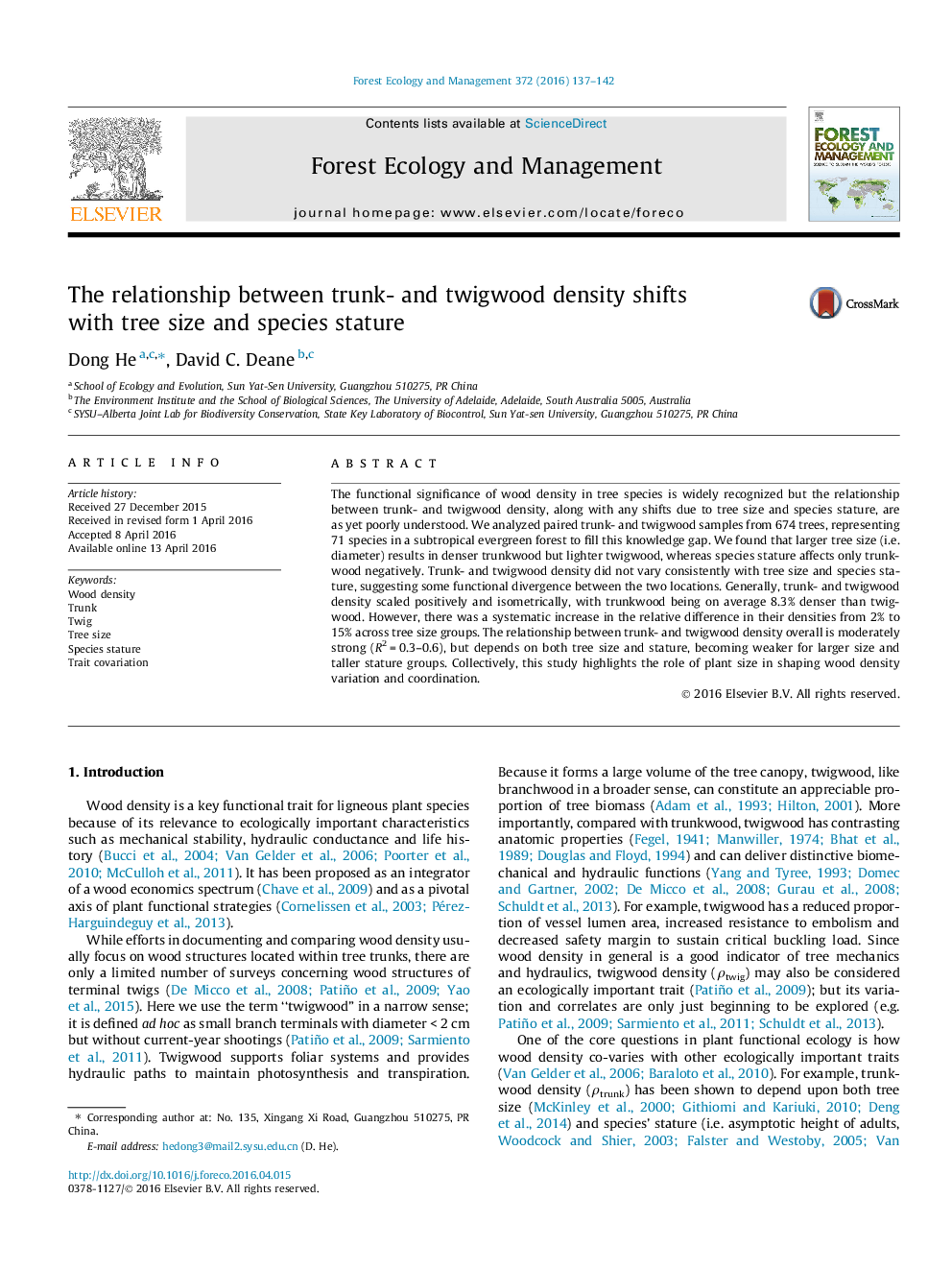| Article ID | Journal | Published Year | Pages | File Type |
|---|---|---|---|---|
| 6542292 | Forest Ecology and Management | 2016 | 6 Pages |
Abstract
The functional significance of wood density in tree species is widely recognized but the relationship between trunk- and twigwood density, along with any shifts due to tree size and species stature, are as yet poorly understood. We analyzed paired trunk- and twigwood samples from 674 trees, representing 71 species in a subtropical evergreen forest to fill this knowledge gap. We found that larger tree size (i.e. diameter) results in denser trunkwood but lighter twigwood, whereas species stature affects only trunkwood negatively. Trunk- and twigwood density did not vary consistently with tree size and species stature, suggesting some functional divergence between the two locations. Generally, trunk- and twigwood density scaled positively and isometrically, with trunkwood being on average 8.3% denser than twigwood. However, there was a systematic increase in the relative difference in their densities from 2% to 15% across tree size groups. The relationship between trunk- and twigwood density overall is moderately strong (R2Â =Â 0.3-0.6), but depends on both tree size and stature, becoming weaker for larger size and taller stature groups. Collectively, this study highlights the role of plant size in shaping wood density variation and coordination.
Keywords
Related Topics
Life Sciences
Agricultural and Biological Sciences
Ecology, Evolution, Behavior and Systematics
Authors
Dong He, David C. Deane,
